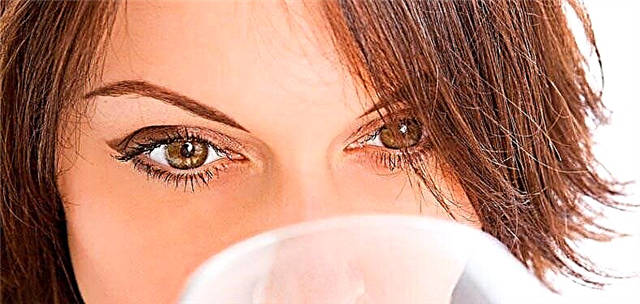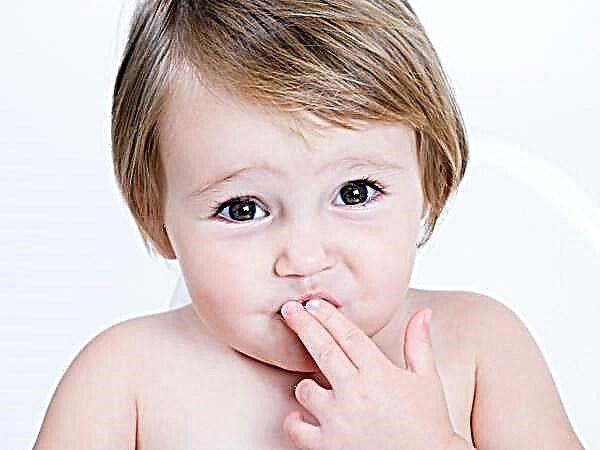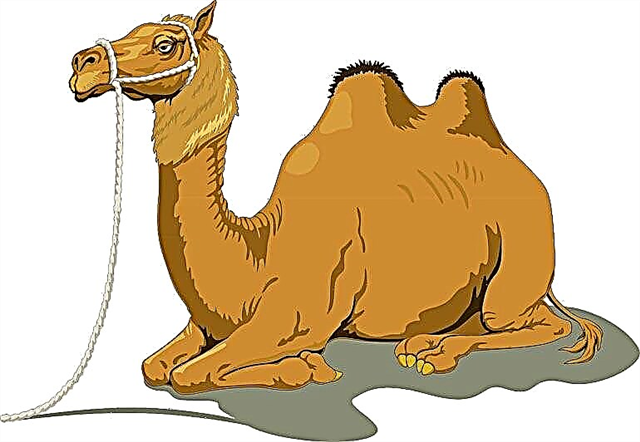After discharge from the hospital, young parents have many questions and doubts about caring for a baby. One such problem is bathing a newborn baby.

Baby bathing
Bathing is not so much a hygienic measure as an important element in the growth and development of a baby. Water procedures have a beneficial effect on the emotional, mental and physical state of the baby, relieve muscle tone, and stabilize blood circulation.
The frequency of bathing the baby
Until now, pediatricians do not give an unambiguous answer to the question of how often to bathe a newborn baby up to a month. Some believe that the baby is not smeared to such an extent that it needs daily bathing. In addition, the baby's immunity is only being formed, and it does not need to be tested. Others, on the other hand, find daily bathing essential.
Which of these opinions is correct, parents decide, based on the well-being of the baby and some external conditions.
Bathing baby 1 month daily
For the first time, a newborn baby is bathed after a crust has formed on the navel. On the 2-3 day after discharge from the hospital, when such a crust has already formed, the parents begin bathing the baby.
A healthy baby at 1 month of age is bathed daily, but without the use of soap, antibacterial agents and herbal decoctions.
Important! Using detergents more often than once a week can disrupt the formation of microflora on the baby's skin, causing a tendency to irritability and dryness.

Bathing crumbs with detergents
Many mothers use chilled boiled water to wash their one-month-old baby until the umbilical wound heals. Not all experts believe this is correct and recommend using just clean water without any impurities. Frequent use of decoctions or herbal infusions is also not always justified. Bathing in a weak solution of potassium permanganate dries out the skin of the crumbs, but prevents infection from entering the unhealed umbilical wound.
Neglect of a child's hygiene does not prevent:
- the appearance of diaper rash on the neck, folds of arms and legs;
- the appearance of prickly heat, especially in the hot season;
- deterioration of the baby's well-being.
At the same time, bathing has a positive effect on the baby:
- muscle tone is removed,
- blood circulation is activated,
- the skeleton is strengthened,
- muscles develop.
In the hot season, daily bathing is mandatory; in the cool season, parents and pediatricians consider it normal to skip several sessions, especially if adults do not have the opportunity to warm up the room to a favorable temperature.
Optimal bathing frequency for babies
After analyzing the opinions of experts about the optimal frequency of bathing babies, the conclusion suggests itself that the decision on how often to bathe a newborn baby is made by the parents. The frequency of bathing depends on the health status of the toddler and the external conditions (for example, from the season).
If in winter mums and dads do not achieve the optimal temperature in the room, and the baby freezes after bathing, then they are limited to 2-3 baths per week.
In warm spring time, the baby is bathed every day. Weekly lower the temperature of the water by 1 degree and begin to harden the crumbs. It is believed that the hardening process is more efficient in spring.
In summer, in hot weather, babies are bathed several times a day. This prevents the appearance of prickly heat and diaper rash. Frequent water procedures provide the baby with a comfortable state of health in the heat.
In autumn, bathing is carried out no more than 1 time a day. At the same time, they closely monitor the health of the baby. If you have ailments, bathing is postponed for the next time.
Regardless of the number of baths, in the morning they wash the little one, and also wash it as needed.
Room and water temperature
During the bathing of the baby in the home and the bathroom, the optimal temperature regime is maintained. Some caring parents warm up the room for bathing crumbs well, especially in the cold season. Doctors, including Dr. Komarovsky, think this is wrong. According to the norms, the degree of air warming up in the washing room does not differ from the temperature in the whole apartment. The desired temperature for the baby's life and bathing is 18-22 degrees. Exceeding these indicators will not be useful for the crumbs.
The first two weeks the temperature of the water for bathing the crumbs reaches 370. Then this figure is reduced, but not more than 1 degree weekly. Gradually, the temperature of the water for daily bathing is brought to 27-28 degrees. So that the little one does not get overcooled in the cooling bath, hot water is always carefully added during bathing.
The degree of water heating is monitored using special water thermometers. Sometimes parents use the “grandmother's” method and control the temperature of the bathing water with their elbow. The method is not the most accurate, but it is available to everyone, without exception.
When washing in hot water (36-37 degrees), the baby relaxes and calms down well, then quickly falls asleep. But there is no hardening and healing effect in this case.

Relaxing baby bath
Bath time and duration
The duration of water procedures depends on the age and condition of the baby. For the first time, the child is bathed quickly, within 3-4 minutes. Each subsequent bathing is extended by 1-2 minutes. The optimal duration of water procedures is 15 to 20 minutes. If the parents see that the baby likes bathing, then the procedure is slightly prolonged, but a long stay in the water also has negative consequences.
Safety rules while swimming:
- prepare in advance clean clothes, a towel and products necessary for baby's skin care;
- cover the changing table with a soft towel and a diaper;
- water is prepared in advance for the bath and for rinsing the toddler;
- be sure to check the temperature of the water before immersing the baby in it;
- under no circumstances leave the baby alone in the bathroom, the presence of accessories for bathing does not guarantee safety;
- add warm water so that the delicate skin of the child does not suffer;
- water procedures are canceled if the crumbs have a high fever or other ailments.
Most often, the baby is bathed in the evening before bedtime. The optimal time for this is daily - between 20.00 and 21.00. Sometimes parents organize water procedures for the baby at another time, convenient for them and the baby. Usually, the baby is bathed 30 minutes before feeding and some time after waking up.
E. Komarovsky believes that evening bathing has its advantages: the procedure relaxes and calms the child, it contributes to a sound and healthy night's sleep.
The difference between bathing and washing
During the day, the baby repeatedly empties the intestines and bladder. To avoid skin inflammation, infection and irritation, the child's genitals and bottom are washed under running water. This is done before each diaper change. In emergencies, baby wipes are used, but if there is such an opportunity, then the advantage is given to ordinary water.
Important! Wet baby wipes contain chemicals that adversely affect the delicate skin of babies.
Almost all parents understand why bathing is not a substitute for washing. Washing is a hygienic procedure that keeps your baby's body clean. Bathing is considered not so much as a hygienic procedure, but as a means to stimulate and strengthen the immune system, one of the ways of physical development of the baby, a source of positive emotions.
Bathing a child in a large tub
Not many parents dare to bathe their baby in a large bathtub, as they fear for the safety of the baby. The large bathtub provides more opportunities for play and activities with the baby, even for training swimming skills.

Bathing in a large tub
In order to save water and limit space, manufacturers offer special restraints in a large bathtub for bathing a baby. Bath mat with pockets allows you to comfortably kneel when bathing your baby in a large tub. The pockets store everything you need for swimming. Needlewomen make such a rug on their own.
Bathing rules in a large bath:
- The procedure is organized for babies with a healed umbilical wound.
- It is imperative to monitor the temperature of the water throughout the procedure.
- The child is gradually lowered into the water: first, the arms and legs are moistened, only then the body.
- Correctly hold the crumb. The little finger of an adult is in the area of the baby's neck, the remaining fingers are in the area of the back of the baby's head. In this position, the body of the toddler floats well above the water.
- Make sure that no water gets into the baby's mouth and nose.
- With his free hand, the adult regulates the degree of immersion of the baby in the water.
- When bathing for the first time in a large bath, they leave the baby time to get used to the large open spaces, only then they start driving the baby in the water and in this way activate his movements.
- To facilitate the development of a large body of water, the toddler is put on a special inflatable ring with a recess for the chin and a Velcro fastener on the neck.
After adaptation to this method of bathing, mastering the basic poses begins:
- lying on your back with support for the head,
- swimming on the stomach (with the support of the chin between the thumb and forefinger),
- sitting posture.
Important! If bathing in a large bath does not bring a crumb of pleasure, then such a procedure is postponed or transferred to the age of 2-3 months.
Bathing in a baby bath
Most parents prefer bathing in a special tub. This is less of a hassle for adults and makes it easier to monitor the baby.
What are the bathing baths:
- The classic baby bath. It has an anatomical shape, comfortable for both adults and kids. Designed for a child up to 3 months.
- With an antimicrobial layer, which, if used correctly, disinfects the surface of the bath for a long time. A convenient accessory, but also rather expensive.
- The thermal bath is equipped with a built-in thermometer and a reservoir for liquid soap or shampoo.
- An inflatable bathtub is used in a summer cottage or field conditions.
Together with the bath, other bathing accessories are usually purchased, these are:
- a slide or hammock that keeps the child in a reclining position,
- a jug or ladle with a lid for rinsing the baby (water is poured into it simultaneously with the bath and cools down a little by the time of rinsing, which has a beneficial effect on the baby's body),
- thermometer for water,
- baby soap (liquid or lumpy), pH neutral shampoo, skin oil, soft sponge.

Bathing in a small bath
The procedure for bathing a baby in a bath:
- the container is thoroughly treated with a soda solution and rinsed several times;
- fill with water 2/3 of the volume, check the water temperature;
- then the baby's head is laid at the bend of the elbow, the ass is held with the palm of the hand;
- the child is carefully immersed in water: the legs are lowered first, then the body to the middle of the chest; if there is a slide or hammock, first install the accessories correctly, make sure they are safe and only then place the child on them;
- gently, without a washcloth and soap, wash the folds on the child's skin;
- turn the crumb over;
- rinse with water from a jug from head to toe;
- wrap the baby in a soft diaper.
Important! Bathing necessarily evokes positive emotions in the baby. To do this, an adult during the procedure speaks affectionately with the baby.

Bathing in a good mood
After bathing procedures
A small child is not wiped, only his skin is blotted with a soft towel or a diaper with a stitched corner for the head. Then they put the baby on the changing table and examine the body to identify rashes and diaper rash.
After bathing, the umbilical wound is treated. Normally, it heals within 2 weeks, but requires daily attention. To reduce the risk of infection, the first time the baby is bathed in boiled water or a weak solution of potassium permanganate.
The skin of a healthy child does not require the use of creams, oils or other products. In case of problems, Dr. Komarovsky advises: "Wet - dry, dry - moisturize!"
Pediatricians recommend the treatment of dry areas with baby oil, with redness in the folds they fight with powder or talcum powder. Baby cream is used to treat wrinkles on the body and prevent diaper rash. A cream or spray containing panthenol is necessary for the healing of diaper rash and dry skin. Baby powder and talcum powder reduce moisture in problem areas.
Important! Dust or talcum powder is not sprinkled on the baby's skin. They are applied to the hand and the folds are processed.
Milk or lotion is good for preventing dry skin, it does an excellent job of peeling skin on the palms and feet.
Note! Any care products are applied to dried skin.
Wipe your ears before dressing. The cap is put on first, then the diaper. Only then is the baby dressed or swaddled. Some experts advise swaddling your baby for good sleep.
After properly carried out water procedures, the baby has a good mood, is ready for feeding and early sleep. Bathing is a mandatory procedure for a newborn baby, necessary for its full growth and development. It does not require special medical knowledge and skills from an adult.



